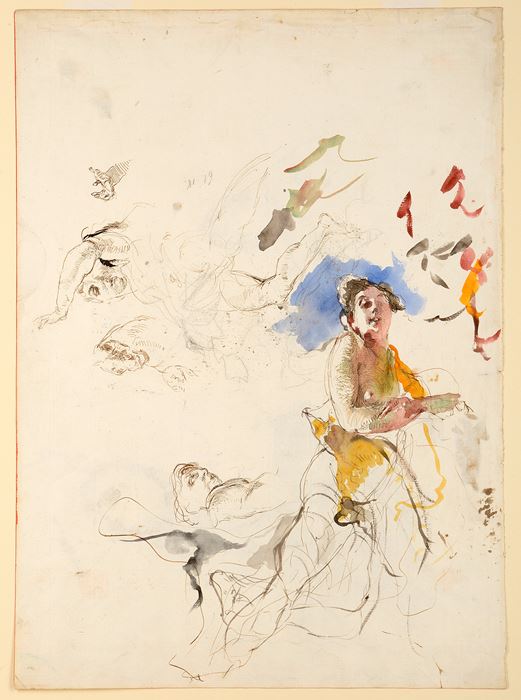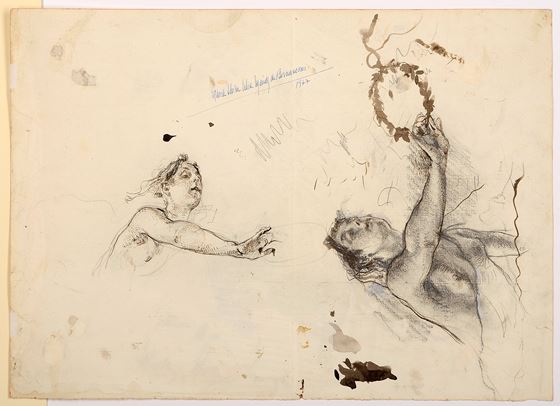Description & Technical information
Both sides of this large drawing are related to the decoration of the Villa Giovanelli in Lonigo, where Mosè Bianchi was commissioned in 1877 to paint a series of frescoes for the ground floor rooms. A family of bankers and merchants, the Giovanelli were well known as collectors and connoisseurs, and their employment of Bianchi served to enhance the artist’s reputation, and led to further fresco commissions. Much of the effect of these ceiling frescoes, painted with a mastery of foreshortening and perspective in three rooms of the villa, has today been lost as a result of poor restoration and conservation. Bianchi produced several preparatory studies for the Villa Giovanelli frescoes, in the form of oil sketches, drawings, watercolours and even plaster models, and it is only through the surviving studies for the frescoes that a sense of their Tiepolesque 'freschezza' can be appreciated.
The main figure on the recto of this large sheet would appear to be a first idea for the figure of Florain the fresco of the same subject in the sala della musica of the Villa Giovanelli. The pose of the figure is, however, somewhat closer to a preparatory oil sketch for the fresco, in an Italian private collection, than to the final work. A large oil sketch for the full composition was once in the Bernasconi collection and is today in the Pinacoteca Ambrosiana in Milan, while an oil sketch for the figure of Flora alone, also from the Bernasconi collection, appeared on the art market in London in 1994.
The verso of the present sheet contains two studies for an allegorical female figure holding a laurel wreath in Bianchi’s fresco of Glory and History in the sala degli arazzi of the Villa Giovanelli, for which a large preparatory painting is in the Museo Godi Valmarana in Lugo Vicentino. A chalk study for the entire figure, also from the Bernasconi collection, was on the art market in New York in 1987.
This double-sided sheet was once part of a large group of paintings and drawings by Mosè Bianchi purchased from the artist by the brothers Juan (d.1920) and Felix Bernasconi (d.1914). The Bernasconi brothers were prominent Milanese industrialists who formed an impressive collection of works by contemporary Italian painters of the late 19th and early 20th centuries.
Period: 19th century
Origin: Italy
Medium: Pen, Brown ink, Touches of watercolour, Over an underdrawing in black chalk, On laid paper
Signature: Numbered 61.18 on the recto, and 23 on the verso.
Inscribed with a signature of a Bernasconi heir, dated 1977, on the verso.
Dimensions: 53.5 x 38.6 cm (21¹/₈ x 15¹/₄ inches)
Provenance: Acquired from the artist by Juan and Felix Bernasconi, Milan
By descent to their sister Maria Bernasconi, Mendrizio, Canton Ticino, Switzerland
By descent to Alfonso Bernasconi Peluffo, Buenos Aires
His wife, Marià Elvira Celia Méndez de Bernasconi, Buenos Aires (Lugt 5374), by 1977, with her signature on the verso
The Bernasconi sale (‘The Bernasconi Collection of Italian Pictures and Drawings of the 19th Century’), London, Christie’s, 27 March 1987, lot unidentified
Borghi & Co., New York, in 1987
Private collection, New York
P. & D. Colnaghi, London, in 1995
Private collection, London.
Exhibitions: New York, Borghi & Co., Mosè Bianchi, 1987, no.45; New York and London, Colnaghi, Master Drawings, 1995, no.49.
Categories: Paintings, Drawings & Prints
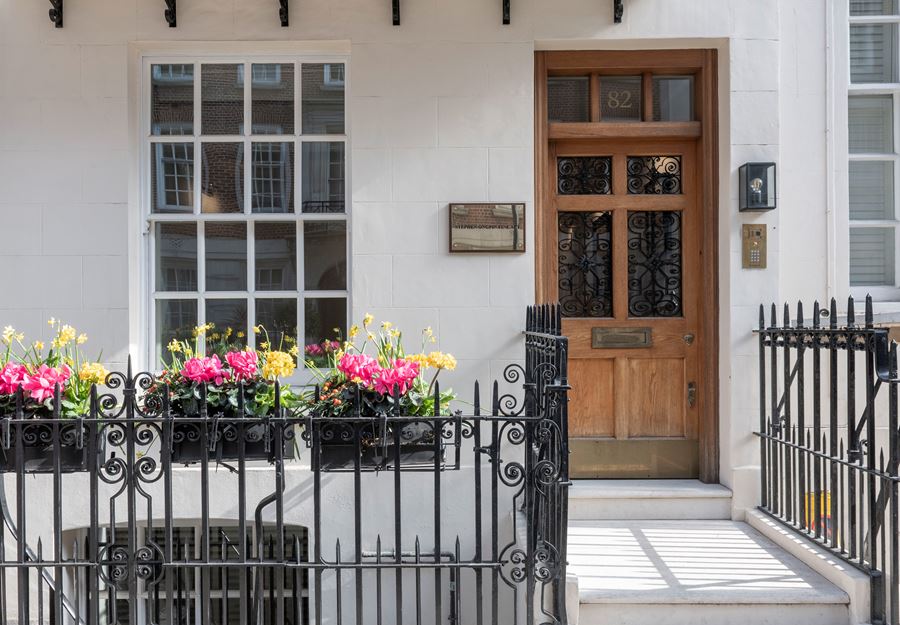
Discover the gallery
Stephen Ongpin Fine Art
Old Master, 19th Century and Modern Drawings, Watercolours and Oil Sketches
More Works From This Gallery
_T638203653710991619.jpg?width=720&height=1200&mode=max&quality=60)
Stephen Ongpin Fine Art
Turmeric (Curcuma longa)
Pierre Joseph REDOUTÉ (Saint-Hubert , 1759 - Paris, 1840)
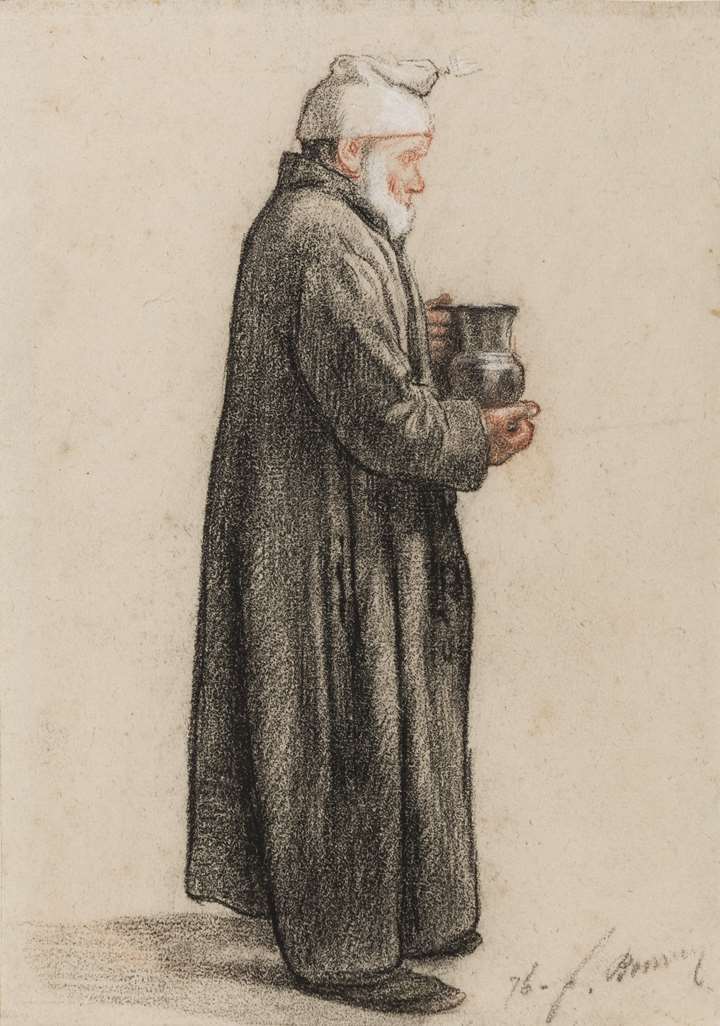
Stephen Ongpin Fine Art
A Standing Man Holding a Jug
François BONVIN (Vaugirard, 1817 - Saint-Germain-en-Laye, 1887)
![Sheet of Studies of Several Women, One Nursing a Baby, with an Artist Drawing [recto], Three Women in a Landscape [verso]](https://images.masterart.com/StephenOngpinFineArtMedia/Artworks/Gabriel-Jacques de-SAINT-AUBIN-Sheet of Studies of Several Women, One Nursing a Baby, with an Artist Drawing recto, Three Women in a Landscape_T638203653516461137.jpg?width=720&height=1200&mode=max&quality=60)
Stephen Ongpin Fine Art
Sheet of Studies of Several Women, One Nursing a Baby, with an Artist Drawing [recto], Three Women in a Landscape [verso]
Gabriel-Jacques De SAINT-AUBIN (Paris, 1724 - Paris, 1780)
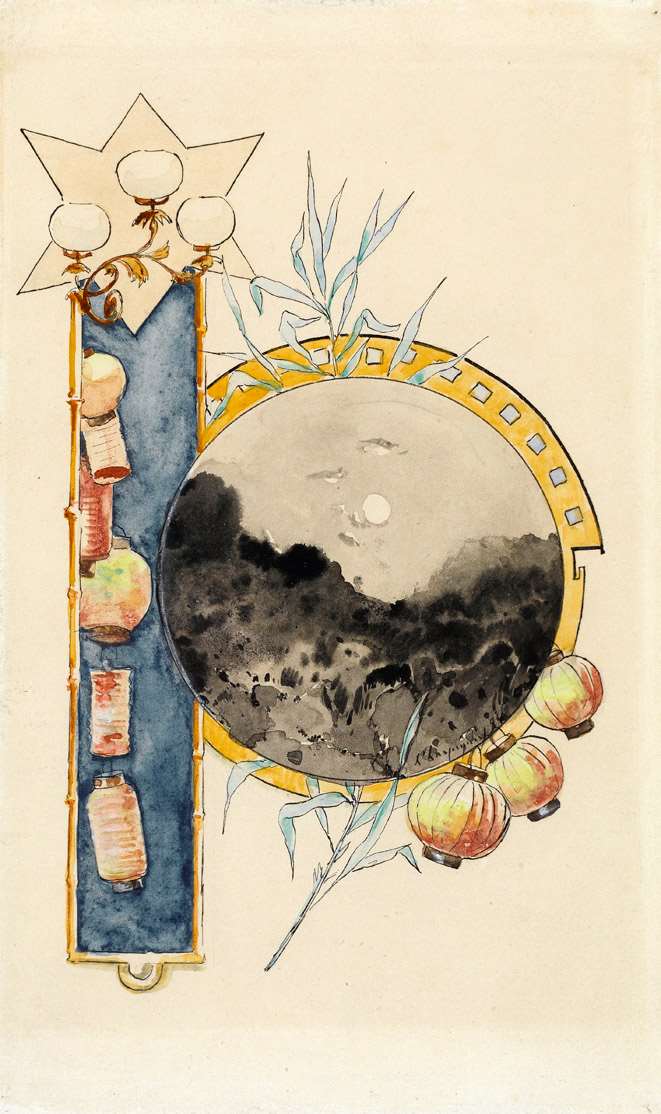
Stephen Ongpin Fine Art
A Circular Landscape, Surrounded by Oriental Lanterns and Motifs
Henri Joseph HARPIGNIES (Valenciennes, 1819 - Saint-Privé, 1916)
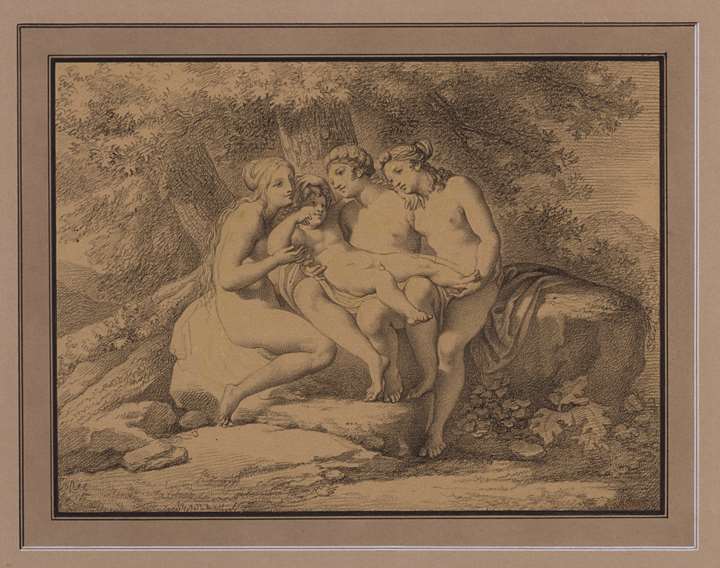
Stephen Ongpin Fine Art
The Education of Bacchus
Pelagio PALAGI (Bologna, 1775 - Turin, 1860)
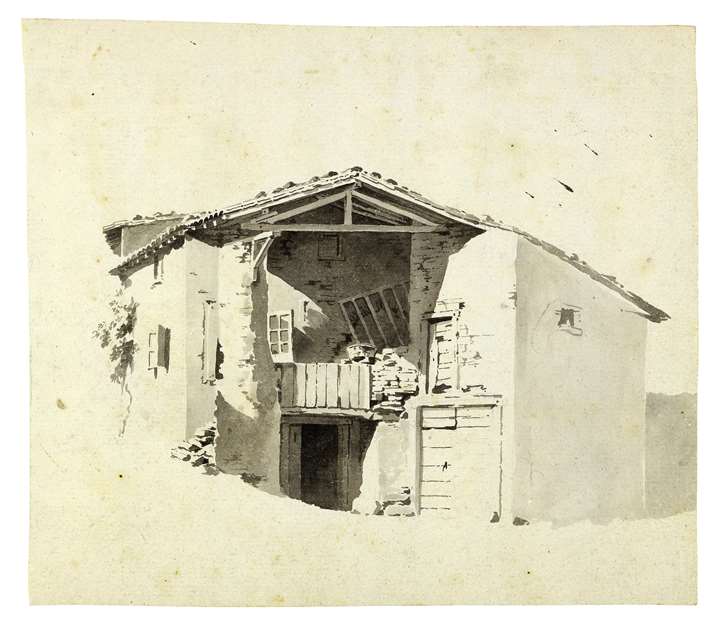
Stephen Ongpin Fine Art
A Ruined Farmhouse
Jean-Jacques de Boissieu (Lyon, 1736 - Lyon, 1810)

